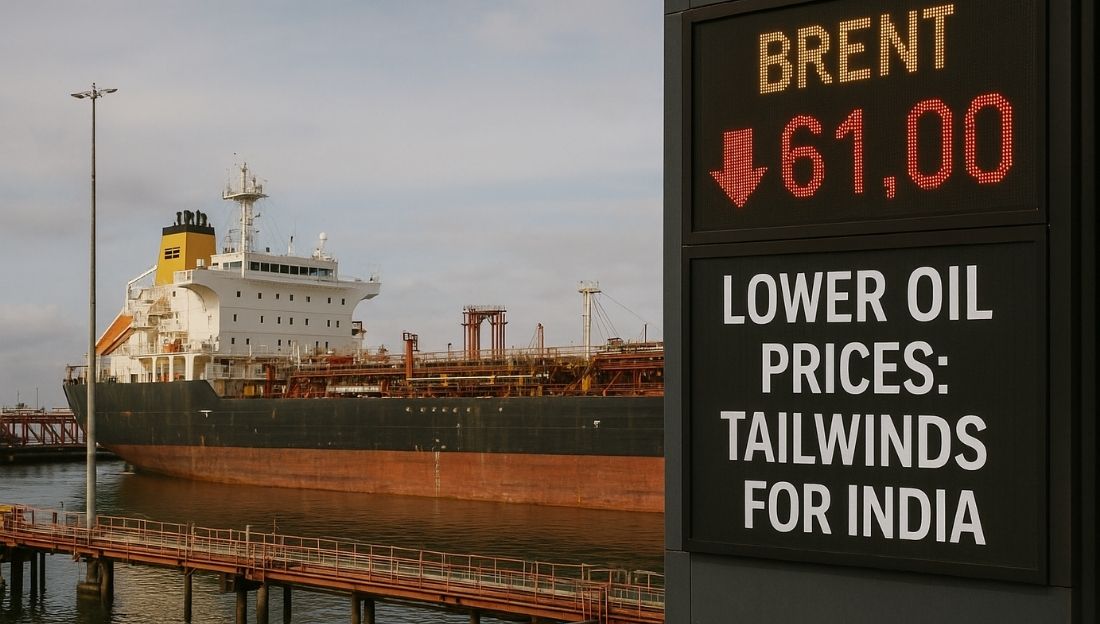Global crude oil prices have been falling, reaching around $61 per barrel, the lowest in recent months. The decline comes amid a global supply surplus and slowing demand, offering potential economic relief for India — the world’s third-largest oil importer.
Background
- Crude oil remains the most traded commodity globally, with over 100 million barrels produced daily, nearly half of which is traded across countries.
- Despite geopolitical tensions like the Ukraine war and the U.S.-China trade conflict, the oil market is witnessing a sharp drop in prices due to changing demand and supply patterns.
- The current situation represents an ongoing contest between OPEC+ producers and non-OPEC exporters, with consumers benefiting from the price dip.

Supply Dynamics
- New extraction technologies such as shale oil, horizontal drilling, and deep-sea exploration have significantly expanded production capacity.
- In the past year alone, global oil production increased by 5.6 million barrels per day (mbpd).
- Of this, 3.1 mbpd came from OPEC+ countries, which lifted COVID-era production curbs.
- The remaining growth came mainly from the U.S., Canada, Brazil, Guyana, and Argentina.
Demand Patterns
- Global demand growth is slowing due to:
- The rise of electric vehicles (EVs), particularly in China (where EVs make up nearly 50% of new car sales).
- Sluggish post-COVID recovery in developed economies.
- Climate change commitments reducing fossil fuel dependence.
- The OECD countries (38 nations with nearly half of global GDP) now account for only 10% of the annual oil demand growth.
Divergent Forecasts
- OPEC’s outlook predicts a supply deficit of about 50,000 barrels per day by 2026.
- The International Energy Agency (IEA), however, anticipates a surplus of around 4 mbpd, signaling continued price weakness.
- Most analysts side with the IEA, expecting Brent crude to drop to $50–55 per barrel next year.
Positive Effects
- India’s oil import bill in 2024–25 was $137 billion.
- Each $1 drop in oil prices reduces the current account deficit (CAD) by approximately $1.6 billion.
- Lower import costs ease inflation and subsidy burden, improving fiscal stability.
- Savings allow the government to boost capital expenditure and stimulate growth.
- Reduced dependence on discounted Russian crude may also ease trade frictions with the United States.
Possible Downsides
- West Asian economies, heavily dependent on oil exports, may experience slowdowns, which could impact: Indian remittances, exports, and investments from the Gulf region.
Conclusion
The current oil price decline offers short-term economic relief to India through lower import bills and improved fiscal balance. However, as the oil market is cyclical, prices could rebound with any geopolitical shock or production cut.
This topic is available in detail on our main website.





